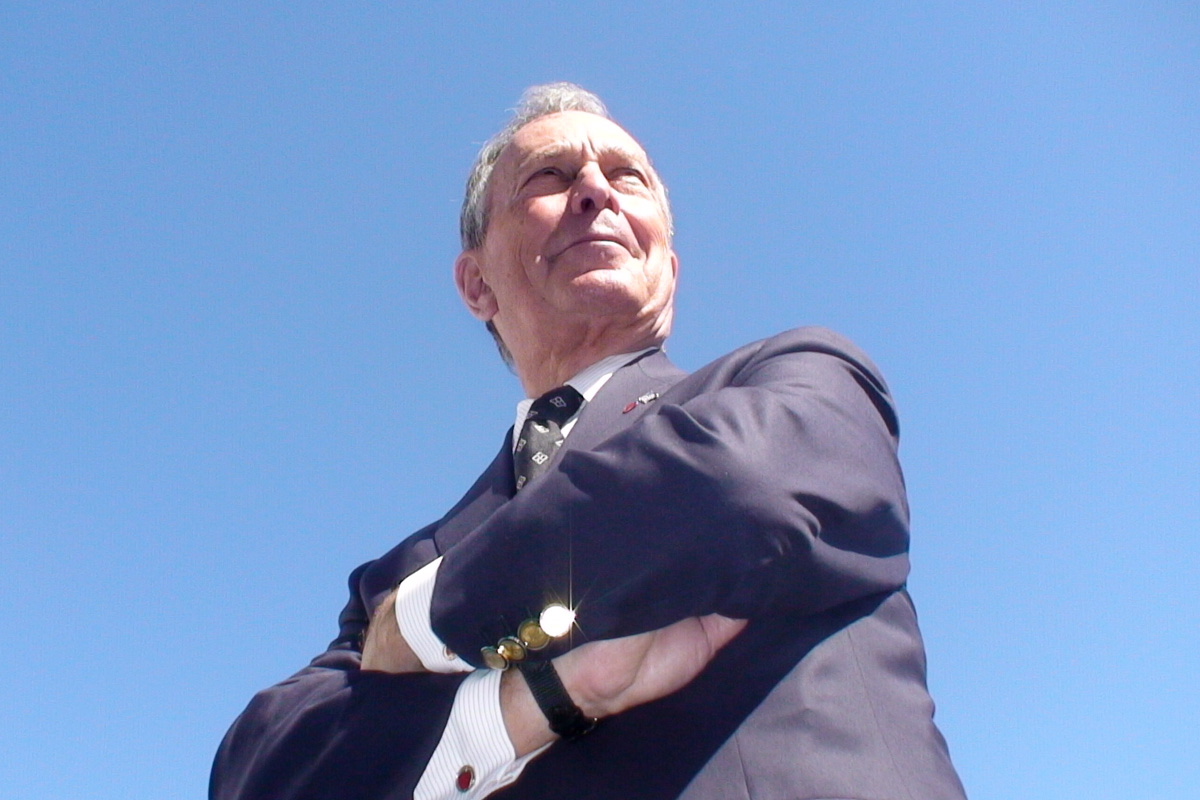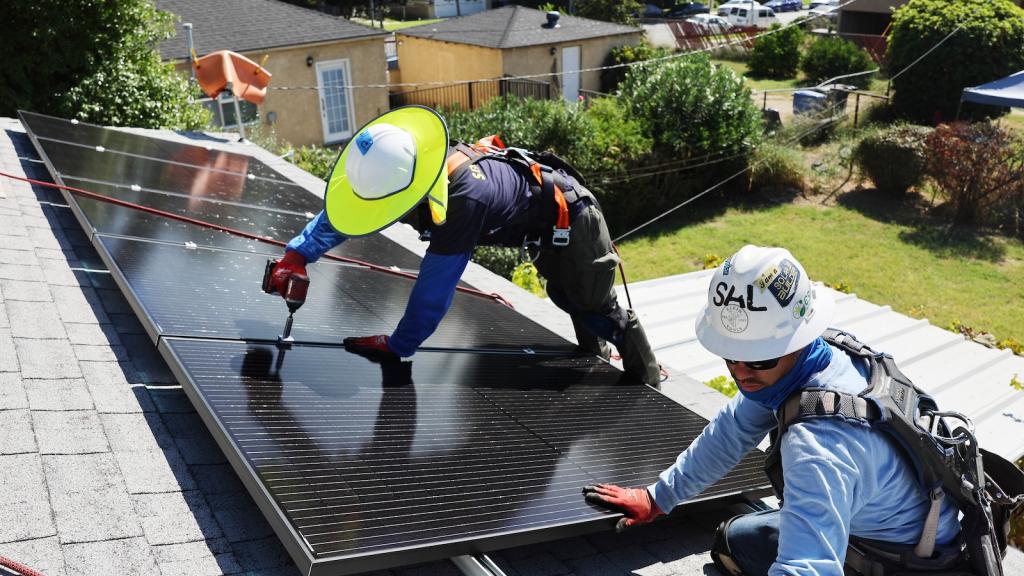It has become a common assertion, repeated ad nauseum by hack pundits such as yours truly, that New York City’s outgoing mayor, Michael Bloomberg, has become one of the world’s most forceful opponents of climate change. Journalists typically refer to Bloomberg’s blueprint for reducing New York’s carbon footprint and adapting to climate change, known as PlaNYC. But such passing references typically fail to offer details of how exactly Bloomberg has done it: What are the components of New York’s sustainability agenda, and what is the story behind its adoption?
Into that void steps InsideClimate News with its e-book, Bloomberg’s Hidden Legacy: Climate Change and the Future of New York City. In almost 25,000 words, InsideClimate reporters Katherine Bagley and Maria Gallucci have brought us the definitive account of Bloomberg’s greatest achievement.
Reading through the book, which is available for purchase in its entirety, and for free on the InsideClimate website in five installments, I was reminded that what we now think of as one of Bloomberg’s signature issues, along with smoking cessation and gun control, was not of any particular interest to him during the first half of his tenure. Bloomberg took office less than four months after the horrific terrorist strikes of September 11, 2001. His first term and the beginning of his second were primarily consumed with security concerns and economic revitalization.
And when Bloomberg’s sustainability agenda did arise in 2006, its impetus was not sentimental environmentalism. The mayor was a science geek (he majored in electrical engineering in college) and a technocrat with a commitment to public health. The kind of person who bans trans fats from restaurants and smoking from bars and public parks is a relatively easy sell on environmental regulation. But the real spark for PlaNYC was a projection that New York’s population would grow by a million people by mid-century.
New York’s infrastructure was already over-burdened, its asthma rates alarmingly high in poor neighborhoods, and housing scarce. To provide housing, transportation, and other infrastructure to accommodate population growth and preserve livability, the Bloomberg administration realized that it needed to minimize pollution, maximize green space, and develop post-industrial stretches of waterfront with rising sea levels in mind.
PlaNYC includes greening some 200 concrete schoolyards, the “Greenstreets” initiative to build small green spaces in sidewalks and plazas, and planting 1 million trees throughout the city by 2030. These are both public health and environmental measures at once: They improve local air quality and make public spaces more inviting for active recreation, while trees and green spaces soak up not just carbon, but also rainwater, helping to reduce in the flooding from the stronger storms climate change is bringing to New York. Bloomberg’s comprehensive plans to reduce subsidies for driving and increase the safety of biking and walking and funding for mass transit are an economic, health, and environment triple play: reducing congestion, encouraging exercise, and cutting back emissions.
There were 127 initial components to PlaNYC, a number that continues to grow. Many involve changes to the city’s building codes, such as painting rooftops a reflective shade of white or silver and mandatory energy audits, since buildings account for around 75 percent of New York’s emissions. These rules are obscure, and boring in their details, but collectively they are quite important. Bloomberg’s Hidden Legacy does not dwell on their particulars, focusing instead on the chronological story. This is very much to its credit. The book reads somewhat like a dispatch from inside the campaign trail such as Game Change by John Heilemann and Mark Halperin.
Of course no single event affected Bloomberg’s environmental initiatives more than Superstorm Sandy. Prior to Sandy, Bloomberg’s focus was on reducing greenhouse gas emissions. Immediately after Sandy, adapting New York’s pre-existing infrastructure to mitigate the effects of climate change became the top priority and it has stayed there ever since. A panel of scientists convened by City Hall to study the likely effects of climate change on New York found some frightening probabilities: an average of 57 days per year above 90 degrees Farenheit by mid-century, and one-quarter of the city in a floodplain thanks to rising sea levels. In June, Bloomberg laid out a comprehensive plan to prepare for climate change, with expensive proposals to do everything from raising buildings to constructing sea walls and restoring dunes.
Bloomberg’s Hidden Legacy does a fine job of capturing this transformation, and explaining how a once-Republican billionaire became the unlikely champion of climate activism. The book suffers, however, from a slight case of what one of my editors used to call “clientitis”: When reporters rely on access for an inside story, their narration can sometimes come dangerously close to stenographing spin. And ultimately, while it’s a good yarn, the story is a bit undigested. The book doesn’t explore what Bloomberg’s story means for the world at large.
I would argue that Bloomberg’s actions have had two main effects on the politics of climate change in America, and perhaps the whole world. The first is that Bloomberg has helped move the image of climate change activism away from the caricature of soft-headed, tree-hugging hippies. A pro-business former banker known for his rigorous, data-driven, management style, Bloomberg has shown that addressing climate change is a manifestation of rational self-interest, not bleeding heart liberalism.
Secondly, PlaNYC has shown that local governments can help reduce emissions through policies with ancillary economic, environmental, and public health rewards. Often, climate change can seem like such a big problem that one is paralyzed: It doesn’t matter what kind of soap you buy, the Earth is going to hell unless the U.S., China, and India all adopt cap and trade, so what’s the point of doing anything? New York has demonstrated that if you take a bunch of little requirements — that buildings must insulate their heating pipes, for example, and that they must switch to burning cleaner heating oil — and add them all together, you can improve energy efficiency and reduce emissions over time. (Bloomberg just boasted on a press call Tuesday morning that New York City’s emissions are down 16 percent in the last six years.)
Hidden Legacy rightly hails Bloomberg as the most forward-thinking mayor on climate change in the country, but ironically, that can be depressing. It is a sad statement on our national politics that Bloomberg’s straightforwardly technocratic, empiricist approach to dealing this problem counts as the cutting edge of progress.
Bloomberg only adopted the issue in 2006-07, many years after the science of climate change had been established. And it took Sandy to focus his attention on the need to prepare more aggressively for the inevitable effects of climate change. Meanwhile some of the best components of PlaNYC were stymied. Congestion pricing required approval of from the state government, which denied it. A mandate for taxis to be hybrid vehicles was successfully defeated in court by the taxi medallion owners – the same taxi lobby that has its hooks in New York’s next mayor, Bill de Blasio.
If this is the state of politics in New York, how long will it be before, say, Texas or Missouri catches up? I’m afraid it may be too long: As anyone who lived through Sandy in New York City knows, our time is running out.



